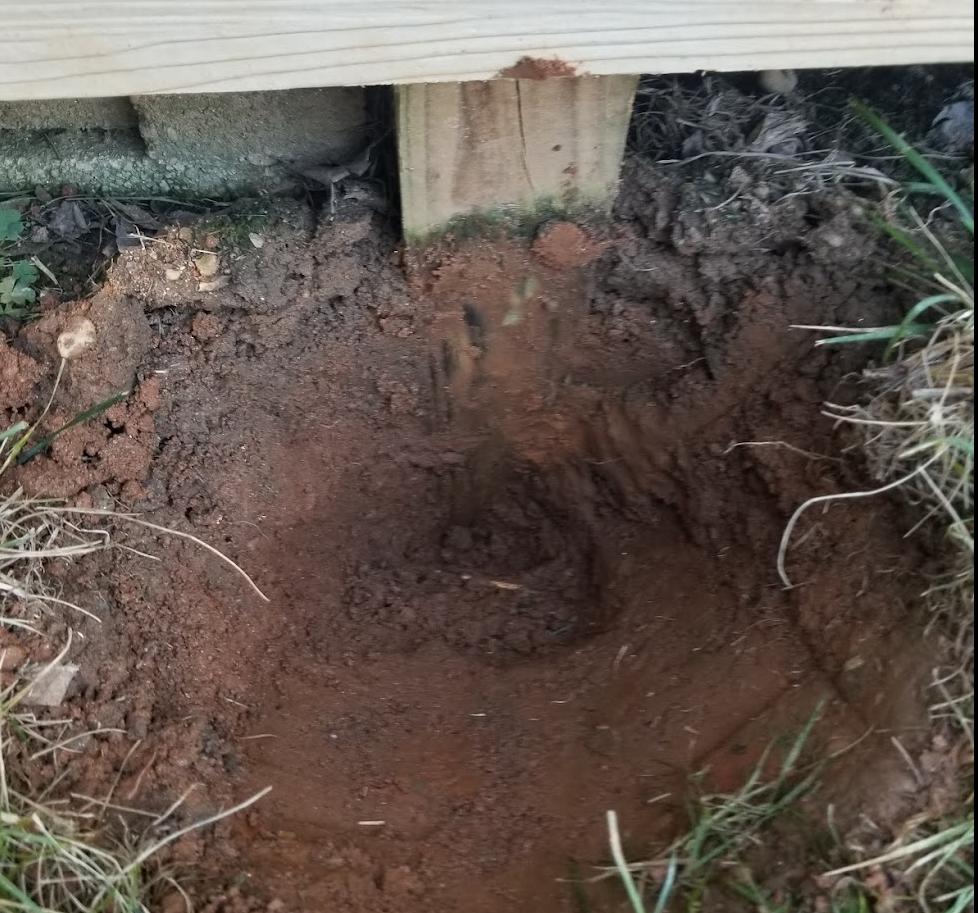I have a raised deck (no idea how old; maybe 10-15 years). It is supported by 4x4 posts. I couldn't find any concrete footings by digging (maybe I didn't go deep enough). Much of the posts are exposed to the soil with no signs of rot yet. I had a deck inspection and it was recommended to replace the 4x4 with 6x6 and install concrete footings (I assume new code since deck was installed). Per code they need to be below the frostline 30in (in maryland) and 20x20 dimensions. Most of this seems fairly straightforward: removing everything from deck, support deck on 6x6 wedged on wood, dig out old posts, pour concrete into footing form and sonotube, install bracket before dries, let dry 3-7 days, install new 6x6 on mount and new brackets, lower deck. Should take about 90 bags of concrete across 9 posts. I plan on installing a waterproofing system, so there shouldn't be any rain water under the deck any longer.
The annoying posts are the ones closer to the house which is what is making me rethink this recommendation. The posts are:
- Under the L-shaped area of my deck in a cantilevered configuration.
- Within 5' of the foundation which means I need to go down to the house foundation per code. I'm hoping that too is 30in at the frost line.
- I have a drain pipe next to one of the posts. Looks like it's made of pvc, ok maybe i can move it if needed
- I have a drain gutter also next to it, ok maybe I can deal with that.
- Most annoying: I have one post (actually 2 2x4) right next to the foundation. Now this I don't know how to deal with. What would a footing even look like that that butts right up against the house?
So my options are:
- just do the work, and install a 'partial footing' that hugs the foundation of the house (probably without using any sort of pre fabbed form)
- only install footings on the posts away from the house (since the one's under the deck soon wont have any rain in that area)
- do the work on all posts except the one next to the foundation, and waterproof that one as much as possible.
- don't bother with this recommendation since I'll get another 10-15 years out of these posts?
Question: How much additional life would I get out of these posts, in particular the one that butts against my foundation?




